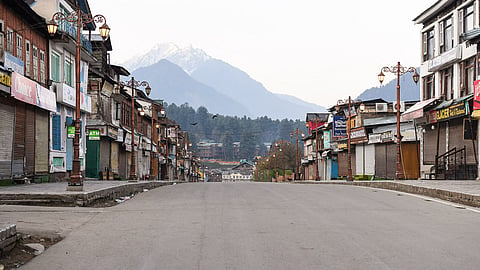

SRINAGAR: Pahalgam, which was bustling with tourist activities until the morning of April 22, now resembles a ghost town, with tourists and locals staying away from the famous resort a month after the deadly attack.
On April 22, Lashkar militants attacked tourists at Pahalgam’s Baisaran meadows, also known as Mini Switzerland, killing 25 tourists and a local ponywala, who attempted to snatch a rifle from one of the attackers in an effort to save the tourists.
“My hotels in Pahalgam were booked up till June-end and all the 70 rooms in the two hotels were sold out. But for a month now, after the April 22 Baisaran terror attack, both hotels are empty and not a single room has been occupied in a month,” said Pahalgam hotelier Abdul Wahid Malik.
With nearly zero tourist footfall in Pahalgam, Wahid’s hotel staff have gone back to their respective hometowns and are now waiting and praying for the return of visitors.
“I have told my staff to take a break and return once the tourists again start visiting Pahalgam,” Wahid said.
Thousands of people including hoteliers, restaurant owners, dhaba walas, eatery shopkeepers, cab operators and ponywalas in Pahalgam depend on tourism for their livelihood.
Abdul Gani, a shopkeeper at Pahalgam market, said they open their shops every morning, but there are hardly any customers.
“We used to do good business till April 22. It was peak tourism season, but after the Baisaran attack, tourists are not visiting the place, maybe because of fear and uncertainty following the India-Pakistan military skirmishes after ‘Operation Sindoor’,” he said, adding that many shopkeepers do not open their shops daily now.
Hilal Ahmed, owner of Shahi Restaurant in Pahalgam, said he closed his restaurant after the attack, as the tourist footfall dropped to zero.
Hilal’s restaurant had a staff of nine members, including three chefs, and all of them have returned to their homes.
“I used to earn Rs 40,000 per day on average as Pahalgam was always thronged by tourists before the April 22 attack. Now, our earnings have dropped to zero,” said Hilal. “We don’t know how long this will continue or what confidence-building measures are needed to bring tourists back to Kashmir.”
Another restaurant owner said a group of 35 tourists visited Pahalgam recently.
“They had bookings for two days in a local hotel, but they stayed only for a day and then returned. Tourists are afraid of visiting the place because of the uncertainty,” he said, adding, “The closure of tourist sites by the administration has also caused fear among tourists, and they are hesitant to travel to the Valley.”
Around 3,500 ponywalas in Pahalgam, who rely entirely on tourism for survival, have been without work for about a month.
“There are 1,900 registered and about 1,500–1,700 unregistered ponywalas in Pahalgam. All of them depend on tourism for their livelihood and survival. With Pahalgam now looking deserted and tourists not visiting the place, not a single ponywala has worked in the past month since the Baisaran attack,” said one ponywala.
He said he had sold 10 marlas of land and established a homestay for tourists, but with no visitors, “we are incurring losses, and we don’t know how long we will have to bear them.”
A cab operator, Zahoor Ahmed, said they have been sitting idle for a month now, as tourist footfall has dropped to near zero and all bookings were cancelled after the April 22 attack.
Tourism stakeholders are now pinning their hopes on a revival of the tourism season during the upcoming Amarnath Yatra, which begins on July 3 and will conclude on August 9, coinciding with Raksha Bandhan.